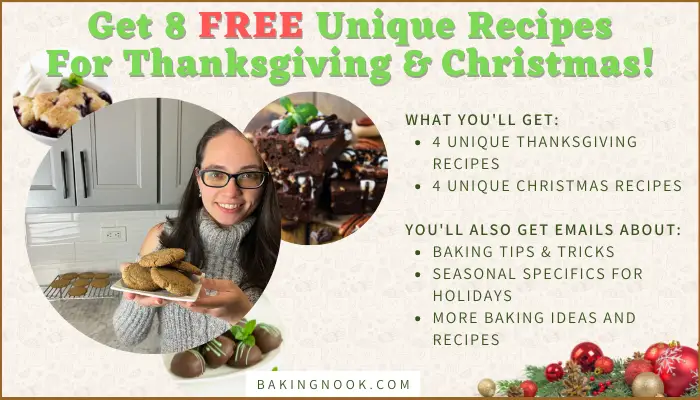This post contains affiliate links.
There are many things that can go wrong when baking a pie. The crust can be too thick or too thin, the filling can be undercooked or overcooked, and the pie can end up being soggy or dry. One of the most common mistakes people make when baking pies is not using the correct oven rack.
The bottom oven rack is the best choice when baking a pie. It ensures that the bottom of the crust will be nice and crispy, while the top of the crust will be golden brown. After the pie crust becomes crispy enough, you can transfer the pie onto the middle oven rack to evenly bake until it’s done.
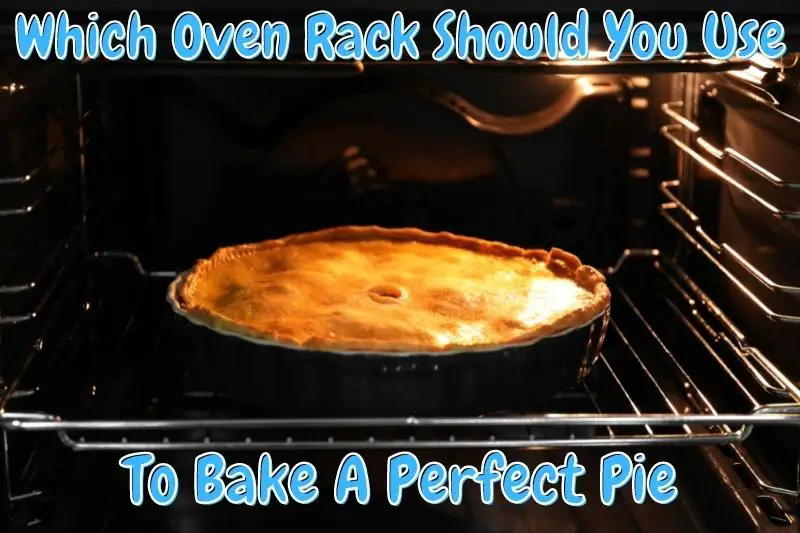
There is still so much you need to know about the racks in the oven when baking a pie. The bottom rack is not the only rack you can use depending on the pie you’re trying to make. Keep reading to learn how to effectively use all 3 racks in the oven for baking a perfect pie correctly.
Which Oven Rack Should You Use To Bake A Perfect Pie?
The bottom oven rack is the best choice when baking a pie. The last thing you want when baking pie is to have an undercooked, soggy, and doughy bottom crust. The bottom oven rack ensures that the bottom crust will be nice and crispy, while the top crust will be golden brown.
Here’s a table describing how I will bake my pies:
| Type of Pie | Oven Rack To Use |
|---|---|
| All Pie Crusts | Bottom Rack at 475°F |
| Most Pie Fillings | Middle Rack at between 350°F and 450°F |
I’ve been using Ceramic Pie Weights for as long as I could remember and it saved my pie crusts on so many occasions. As a general rule, you should use about 2.2 lbs of pie weights for every 9-inch pie you make. I use these Ceramic Pie Weights that you can check out on Amazon!
The bottom rack also allows pie with wet fillings to properly cook through without becoming overcooked or burnt on the top.
I have also noticed that using the bottom rack prevents the edges of your pie crust from getting too dark.
Here’s a quick video I found breaking down the positions of each oven rack for best results:
If you have ever had a problem with your pie crusts being overcooked or burnt on the bottom, it is most likely because you were using the wrong oven rack.
However, keep in mind, that there are still other reasons why you might want to use the other racks in the oven for baking a pie.
*By the way, I recently wrote about How To Effectively Use Pie Weights The Right Way. In this article, I speak about how to use pie weights correctly to get the perfect shaped pie every time. You can check out this article here!
What Happens When You Bake A Pie On The Top Rack?
Baking a pie on the top rack is not ideal because it will most likely result in an underbaked bottom crust and an overcooked or burnt top crust. The top rack is simply too close to the top heat source, which can cause the pie to bake too quickly on the top while the bottom remains doughy.
In general, it is best to avoid baking pies on the top rack unless you want the top of your pie to be extra crusty.
Your pie will likely have a crusty and overcooked top and a doughy and undercooked bottom if you bake it on the top rack. Note that heat rises, so the top rack is going to be hotter than the bottom rack.
Keep in mind that some recipes will call for you to bake the pie on the top rack, so you will need to experiment to see what works best for your particular recipe.
*By the way, I recently wrote an article about The Best Ways To Prevent Your Pie Crusts From Shrinking. This article breaks down all the reasons why your pie crusts might be shrinking and how to avoid it! You can check out this article here!
What Happens When You Bake A Pie On The Middle Rack?
If you bake your pie on the middle rack of the oven, you are likely to end up with an evenly cooked pie. However, there is a chance that the middle rack won’t be hot enough to properly bake the bottom crust, so you may end up with a doughy bottom that will make your pie fall apart when serving.
The middle rack is a new baker’s safe bet when it comes to baking pies. It’s not as close to the heat source as the top rack, so you won’t have to worry about the top of your pie getting too crusty or burnt.
There is consistent air circulation and even heat so your pie should cook evenly, all the way through.
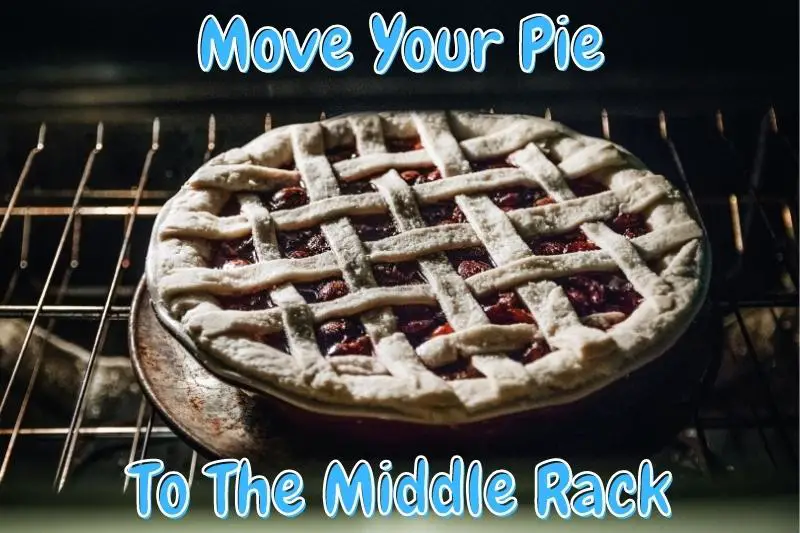
However, you will need to keep an eye on the bottom of your pie to make sure that it doesn’t end up doughy. You may need to experiment with different baking times if you find that the bottom of your pies is not cooking through properly when using the middle rack.
*If you’re trying to bake multiple pies evenly at one time. It’s best to use the middle rack!*
Doing this will bake your pies evenly on all sides depending if you place the pies correctly. Below, you will find an article that I wrote about the right way of baking many pies at once!
*Side Note: You might also want to know How To Bake Multiple Pies In The Oven At Once. I recently wrote an article that talks about The Right Way Of Baking Many Pies Evenly At Once!
What Happens When You Bake A Pie On The Bottom Rack?
When you bake a pie on the bottom rack, the bottom of the pie crust will become crispy, while the top of the pie crust will get golden brown. This prevents having a soggy and doughy bottom crust. You don’t want to have an undercooked bottom crust so using the bottom oven rack is essential.
The bottom rack is the best choice when baking a pie crust. It will ensure that the bottom crust is nice, crispy, and golden brown. Once the pie crust is crispy, transfer the pie onto the middle rack for an even baking for the rest of the baking time.
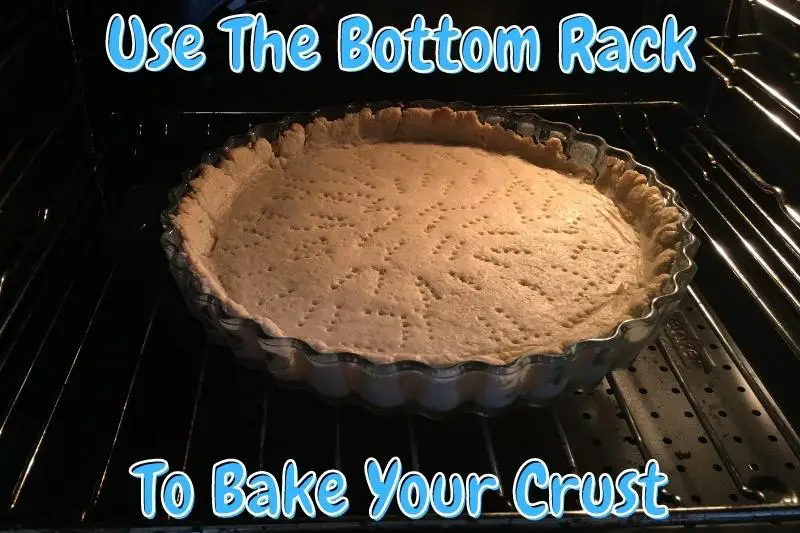
It is important to note that the bottom rack will be closer to the heat source, so you will need to keep an eye on your pie to make sure that it doesn’t get overcooked or burnt.
If you want perfectly cooked pies with crispy bottom crusts and golden brown tops, be sure to use the bottom rack.
*By the way, I recently wrote an article breaking down The Best Pie Thickeners for Thickening Runny Pie Fillings. This article talks about all the potential thickeners that you might have laying around the house that can thicken your runny pie filling. You can check out this article here!
Potential Reasons for Changing Which Rack You Use For Pies
There are various reasons why you might want to change which oven rack you use when baking pies. Here are a few:
The Type Of Oven You Have
There are two major types of ovens convection and conventional. Convection ovens have a fan that circulates the hot air, which helps to evenly cook food.
On the other hand, conventional ovens don’t have a fan and rely on natural convection to circulate the hot air.
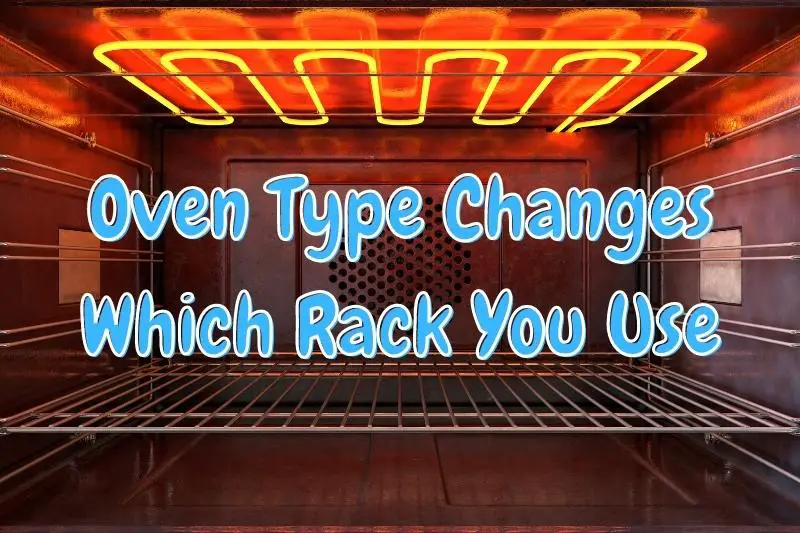
Most people have conventional ovens which have two heating sources – one at the top and one at the bottom. It is best to use the bottom rack of a conventional oven because it is closer to the heating element at the bottom.
If you have a convection oven, you can use either the bottom or middle rack. However, many people find that using the bottom rack gives pies a more evenly cooked crust.
After digging further into the perfect convection oven for baking pies. I came across an Oster French Countertop Convection Oven. This convection oven is perfect for baking pies throughout the holiday season. You can check out this Convection Oven on Amazon!
Texture Preference
I like my pie to have a nice, crispy, and golden brown bottom crust so I use the bottom rack of my oven.
However, some people prefer a softer crust or a super crispy top crust. So they will prefer to use the top or middle rack.
According to NYTimes:
“Temperature is critical for texture when serving pie. The filling of a pie straight from the oven will be more runny (molecules flow more quickly past each other at higher temperatures), so let it cool well before you eat it.”
NYTIMES
Each rack will brown your pie crust at a different rate which will change its texture based on the temperature around that rack. You will need to experiment with different oven racks to see which one gives you the results you want.
The Type Of Pie
The type of pie you are baking can also dictate which rack you should use. Pies with wet fillings, such as pumpkin pies, need to be cooked on the bottom rack to prevent a soggy crust.
On the other hand, crisp-covered pies such as apple pies, are best baked on the middle rack.
Pies that have a very liquidy filling will need to be baked on the bottom rack to make the crust crispy. However, if I need to bake the crust on that’s on top of the pie, I would usually move the pie to the top rack for a few minutes.
Once the crust is well baked on both the top and bottom of the pie, I move the pie to the middle rack to bake evenly for the remaining time!
FAQs
Do you bake the bottom of a pie first?
As a general rule, you need to bake the bottom of the pie crust first before adding any fillings. Doing this will make the crust crispy enough to hold in the moisture of the fillings once they are added. Make sure to bake the pie crust on the bottom rack to make it nice and crispy.
At what temperature do you bake a homemade pie?
Generally speaking, most pies are baked at a temperature between 350° Fahrenheit (175°C) and 450° Fahrenheit (230°C). However, if you are baking your pie crust first, you need to heat the oven to a temperature of 475° Fahrenheit (246°C).
Does it matter where the rack is in the oven?
Generally speaking, the oven rack position that you use depends on if you prefer your food to heat up from the top, the bottom, or evenly spread. A conventional oven has two heat sources coming from the top and bottom which means that your food will get hotter towards the top and bottom of the oven.


